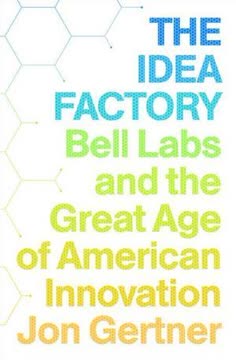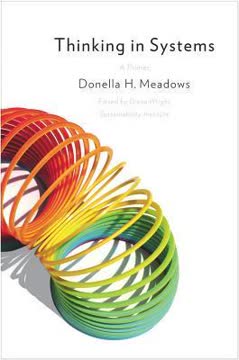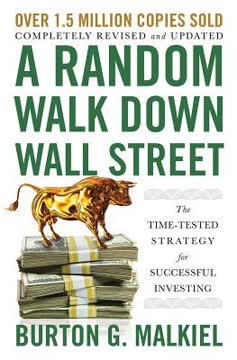重点摘要
1. 博弈论:理解战略互动的本质
战略博弈的核心在于参与者决策的相互依赖性。
决策的相互依赖。 博弈论分析的是一个人的选择结果取决于其他人选择的情形。这种分析适用于经济、政治及社会交往等多个领域。
战略互动的类型:
- 先后顺序:玩家轮流行动
- 同时行动:玩家同时做出决策,彼此不知对方选择
博弈论为理解和预测此类情形中的行为提供了框架,揭示了最优策略及可能结果。它帮助解释企业间的价格战、国际外交乃至日常社交中的种种现象。
2. 纳什均衡:博弈论的基石
纳什均衡是指在一组策略配置中,每个玩家的选择都是对其他玩家选择的最佳回应(当参与者超过两人时亦然)。
最佳回应策略。 在纳什均衡中,任何玩家在其他玩家策略既定的情况下,单方面改变策略都无法获得更好结果。此概念是博弈论的核心,有助于预测战略互动中的稳定结果。
寻找纳什均衡的方法:
- 识别占优策略(若存在)
- 剔除被支配策略
- 寻找相互的最佳回应
尽管纳什均衡是强有力的预测工具,但并非总是完美。有些博弈存在多个纳什均衡,需要进一步分析以确定最可能的结果。现实行为也可能因有限理性或社会偏好而偏离纳什均衡预测。
3. 囚徒困境:合作与自利的冲突
囚徒困境是博弈论中最著名且令人困惑的游戏之一,我们将在第三章回归此话题,探讨解决之道。
个体利益与集体利益的矛盾。 囚徒困境展示了追求个人最大利益反而导致所有参与者结果更差的情形,合作反而能带来更优结果。此概念广泛适用于军备竞赛、环境保护等现实问题。
囚徒困境的关键特征:
- 胜过合作的背叛策略
- 双方背叛导致的帕累托劣势结果
- 合作难以维持
解决囚徒困境通常需要机制将个人激励与集体利益对齐,包括:
- 重复互动(促进互惠)
- 沟通与信任建设
- 外部强制或激励
- 改变收益结构
4. 混合策略:以不可预测取胜
行动(包括纹身)胜于言辞。
战略性随机化。 在某些博弈中,最佳策略是通过随机选择不同动作来保持不可预测性,防止对手利用行为模式,从而在长期获得更好结果。
混合策略的应用:
- 体育竞技(如足球点球)
- 军事战术
- 商业定价策略
计算最优混合策略需找到使对手对其可选行动无差异的概率分布。尽管理论上混合策略最优,实际操作中因认知限制及难以产生真正随机性而具挑战。
5. 逆向归纳法:预判未来行动
向前看,向后推理。
从终点规划。 逆向归纳法是从博弈的终局开始,向前推导每个决策点的最优策略。此法在顺序博弈中尤为有效,玩家轮流行动时可用此法制定策略。
逆向归纳的步骤:
- 确定最终决策点
- 判断该点的最优选择
- 回溯至前一决策点,重复分析
- 直至回到起点
逆向归纳帮助玩家预见行动的未来后果,从而做出更优决策。但其依赖完美信息和理性假设,现实中未必完全成立。
6. 可信承诺:改变博弈结构
有时,如核武器边缘政策,战略思考也意味着知道何时不参与博弈。
改变激励机制。 可信承诺是通过采取行动改变博弈结构,影响他人行为。这可能包括限制自身选择或制造特定行为的后果。
可信承诺的类型:
- 破釜沉舟(消除备选方案)
- 建立声誉风险
- 设立可执行合同
- 授权决策权
可信承诺是影响结果的有力工具,但也带来风险。一旦承诺,玩家可能失去应对变化的灵活性。承诺的有效性取决于其可信度及能否清晰传达给其他参与者。
7. 信息操控:信号与筛选
玩家应关注对方的行动,而非言辞。
战略性信息运用。 在信息不对称的博弈中,玩家需决定如何揭示或隐藏私人信息以谋取优势。这涉及信号传递(知情方的行动)和筛选(不知情方设计机制获取信息)。
信息操控的关键概念:
- 逆向选择
- 道德风险
- 信号成本
- 混合均衡与分离均衡
有效信号需具备高成本或难以被无相关属性者模仿。筛选则通过设计机制(如合同菜单)促使个体通过选择暴露其私人信息。
8. 拍卖:战略竞价与避免赢家诅咒
拍卖竞价需要策略——尽管许多人以为只需举牌即可。
最优竞价策略。 拍卖是一类特殊博弈,参与者竞争买卖物品。理解拍卖形式并制定合适竞价策略是成功关键。
常见拍卖形式:
- 英式拍卖(递增竞价)
- 荷兰式拍卖(递减竞价)
- 第一价格密封竞价
- 第二价格密封竞价(维克里拍卖)
赢家诅咒指赢家因高估物品价值而支付过高价格。为避免此现象,竞价者应考虑他人竞价所透露的信息,调整自身估值。战略考量还包括区分公共价值与私人价值物品及竞价者数量。
9. 讨价还价:谈判的艺术
一般而言,一方在无协议情况下能获得的收益越高,其在谈判中获得的份额也越大。
谈判动态。 讨价还价是双方为分配剩余价值而进行的战略互动。理解影响谈判力量和结果的因素,有助于达成更优协议。
谈判的关键因素:
- 替代方案(BATNA)
- 耐心与时间压力
- 信息不对称
- 承诺策略
有效谈判策略通常包括提升自身替代方案,同时削弱对方选择。可信的威胁或承诺也能显著影响结果。理解如鲁宾斯坦谈判模型等理论,有助洞察谈判过程的动态。
10. 投票:民主制度中的战略选择
投票中同样存在战略问题,正如其他多人博弈一样。
选举策略。 投票系统是复杂博弈,涉及多方(选民与候选人)利益冲突。理解投票的战略层面,有助解释政治行为及结果。
战略投票的考量:
- 诚实投票与战略投票
- 康多塞悖论
- 中位选民定理
- 议程设置权
没有完美的投票系统(阿罗不可能定理),每种制度都激发不同的战略行为。选民有时需投票给次优候选人以避免更差结果,候选人则需根据具体规则调整立场以吸引选民。
最后更新日期:
FAQ
What's The Art of Strategy about?
- Game Theory Focus: The Art of Strategy by Avinash K. Dixit explores the principles of game theory and its applications in business and life, emphasizing strategic decision-making.
- Strategic Thinking: It aims to change the way readers perceive the world by teaching them to think strategically, considering both competition and cooperation.
- Real-World Applications: The book uses various case studies to illustrate how game theory can be applied to real-world situations, making complex concepts accessible.
Why should I read The Art of Strategy?
- Enhance Decision-Making: Reading this book can improve your ability to make strategic decisions by understanding the underlying principles of game theory.
- Practical Insights: It offers practical insights that can be applied in business, politics, sports, and everyday interactions, enhancing decision-making skills.
- Engaging Style: The authors present the material in an engaging manner, using humor and relatable examples to keep readers interested.
What are the key takeaways of The Art of Strategy?
- Strategic Interdependence: Recognizing that decisions are interdependent and that one’s choices affect others is crucial for effective strategy.
- Backward Reasoning: The book emphasizes the importance of looking forward and reasoning backward to anticipate the consequences of decisions.
- Cooperation vs. Competition: It discusses the balance between cooperation and competition, highlighting how sometimes working together can lead to better results.
How does The Art of Strategy explain the concept of Nash Equilibrium?
- Concept Explanation: A Nash Equilibrium occurs when each player’s strategy is optimal given the strategy of the other player(s), meaning no player has an incentive to deviate.
- Stability of Outcomes: This equilibrium represents a stable outcome where players’ beliefs about each other’s actions are confirmed.
- Application: The book discusses how to identify Nash Equilibria in various games, emphasizing their relevance in both theoretical and practical contexts.
What is the significance of Backward Reasoning in The Art of Strategy?
- Strategic Planning: Backward Reasoning involves anticipating future actions and outcomes based on current decisions, allowing for better strategic planning.
- Decision Trees: The authors suggest using decision trees to visualize and analyze the consequences of different choices in sequential games.
- Practical Examples: The book provides examples, such as the Charlie Brown story, to illustrate how failing to use backward reasoning can lead to poor outcomes.
How does The Art of Strategy address the Prisoners’ Dilemma?
- Core Concept: The Prisoners’ Dilemma illustrates a situation where two players can either cooperate or defect, with the best collective outcome arising from mutual cooperation.
- Real-World Examples: The book uses real-world examples to demonstrate how the Prisoners’ Dilemma applies to various scenarios, such as business competition and environmental issues.
- Strategies for Cooperation: It discusses strategies to overcome the dilemma, such as establishing trust and communication, to achieve better outcomes.
What role do commitments play in strategic decision-making according to The Art of Strategy?
- Definition of Commitment: A commitment is a strategic move that binds a player to a specific course of action, making it credible.
- Examples of Commitments: The book provides examples of commitments in various contexts, such as businesses promising to maintain prices.
- Impact on Outcomes: By making commitments, players can shape the behavior of others and steer the game in their favor.
How does The Art of Strategy explain Mixed Strategies?
- Definition of Mixed Strategy: A mixed strategy involves randomizing choices among available options to keep opponents uncertain.
- Application in Real Life: The book discusses how mixed strategies can be applied in various contexts, such as pricing strategies in business or tactics in sports.
- Equilibrium Implications: The mixed strategy equilibrium shows how players can reach a stable outcome even when they randomize their actions.
How does The Art of Strategy apply to auctions?
- Auction Types: The book discusses different types of auctions, including Vickrey auctions, where the highest bidder pays the second-highest bid.
- Bidding Strategies: It provides insights into effective bidding strategies, emphasizing the importance of understanding competitors' behaviors and valuations.
- Case Studies: Real-world auction examples, such as spectrum auctions, illustrate the principles of game theory in action.
What are the best quotes from The Art of Strategy and what do they mean?
- “Strategic thinking is the art of outdoing an adversary, knowing that the adversary is trying to do the same to you.”: This quote encapsulates the essence of strategic competition.
- “The key lesson of game theory is to put yourself in the other player’s shoes.”: This highlights the importance of empathy and understanding in strategic decision-making.
- “The true cost of winning is often hidden.”: This reflects the idea that achieving success may come with unforeseen consequences.
How does The Art of Strategy address the concept of cooperation?
- Mutual Benefits: The book discusses how cooperation can lead to mutually beneficial outcomes, especially in situations where parties have aligned interests.
- Tacit Cooperation: It introduces the idea of tacit cooperation, where parties recognize the benefits of working together without explicit agreements.
- Case Studies: The author uses case studies to illustrate successful cooperation in various contexts, demonstrating how strategic alliances can enhance overall outcomes.
How can I apply the lessons from The Art of Strategy in my personal life?
- Strategic Decision-Making: The principles of game theory can be applied to everyday decision-making, helping you navigate complex social interactions and relationships.
- Negotiation Skills: The book offers valuable insights into negotiation techniques that can improve your ability to reach agreements in personal and professional settings.
- Conflict Resolution: The concepts of cooperation and strategic thinking can help you resolve conflicts more effectively, fostering collaboration and finding win-win solutions.
评论
《战略的艺术》评价褒贬不一,许多读者赞赏其对博弈论的通俗介绍及现实应用。读者喜欢书中生动的案例和战略思维的启发,但也有人觉得内容重复或数学部分较为艰深。评论者指出本书与作者之前的著作相似,且对其在商业和生活成功中的实际价值持怀疑态度。总体来看,本书被视为博弈论概念的扎实入门读物,尽管对其深度和与日常情境的相关性,观点存在分歧。
Similar Books















